
A cappuccino is an excellent choice for coffee lovers who like finely textured milk drinks with lots of froth.
Pulling espresso shots and frothing milk for a cappuccino does require a lot of practice and patience, but the end results are rewarding.
For me, the cappuccino is not only a beverage, but also an experience and a great way to study, learn and master a new skill.
Some links found in this post are affiliate links, meaning we may receive a commission if you decide to make a purchase, at no additional cost to you.
There are 5 main steps to making it – preparing, pulling the shot, milk frothing and pouring and garnishing.
I’ll walk you through each step so you can learn how to make a cappuccino at home with an espresso machine.
Click here to skip to the full instructions.
What is a cappuccino?
A cappuccino is a fancy version of your standard cup of coffee and a staple beverage in coffee shops all around the world.
It’s an espresso based coffee beverage consisting of espresso and frothed milk.
Traditionally, a cappuccino is made with one part espresso, one part steamed milk and one part foamed milk, and garnished with cinnamon or cocoa powder on top.
Read More: A Guide to 20+ Popular Types of Coffee
Cappuccino vs latte vs macchiato
The cappuccino may sound a lot like some other coffee drinks. I’ll clear some confusion here and so you’ll be able to properly order one of these coffee beverages at a cafe.
A cappuccino, as mentioned above, is traditionally made with equal amounts of espresso, steamed milk and foamed milk.
A latte, on the other hand, has more steamed milk and a smaller layer of foamed milk, where the latte art sits.
A macchiato is a shot of espresso with just a small amount of milk. The word macchiato means stained in Italian, so it’s like staining the espresso with the milk. This means the drink is smaller than a cappuccino and latte.
However, if you go to major chain cafes like Starbucks, you may encounter a macchiato that is larger than what was just described. That’s an espresso macchiato.
Meanwhile, the Starbucks version is a latte macchiato and consists of similar components as a latte, but the milk is poured first, then espresso.
In summary:
- Cappuccino: ⅓ espresso, ⅓ steamed milk, ⅓ foamed milk, garnished with cinnamon
- Latte: ⅓ espresso, ⅔ steamed milk, thin layer of foamed milk, topped with latte art
- Espresso Macchiato: 1 shot espresso, touch of milk
History of the cappuccino
The cappuccino as we know today, was first introduced to the world at the beginning of the 20th century, at about the same time when the steam-driven espresso machine was invented in Italy.
The word cappuccino came from a religious order. It literally means “little cap” in Italian.
There is an interesting story on how cappuccino got its name from the Capuchin monks, who wear robes that resemble the color of the foam mixed with espresso in a cappuccino.
Capuchin monks are members of the larger Franciscan society of monks which was founded in the 16th century in Italy. They were noted for their heroic missionary work and social work among the poor, along with their devotion to poverty, simplicity, and austerity.
And now we’ll make a cappuccino!
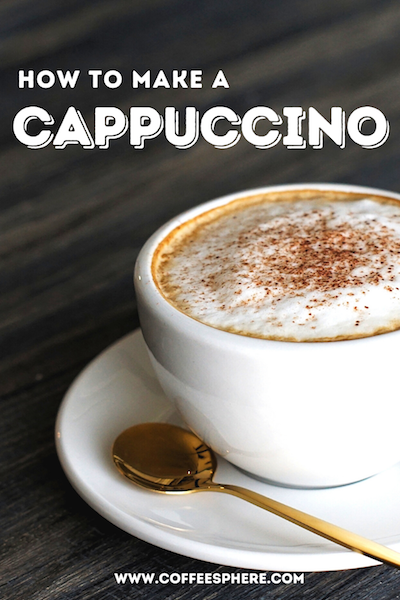
How to Make a Cappuccino
The following are the tools and ingredients you’ll need before you can begin making a cappuccino:
Cappuccino Ingredients
- Espresso machine
- Stainless steel milk frothing pitcher
- Cappuccino cup with saucer
- Spoon
- Digital scale
- 18 grams ground coffee
- 4 ounces milk
- Ground cinnamon / Cocoa powder
Part 1: Preparation
It is important to warm the espresso machine. Depending on your espresso machine, it may take 15-30 minutes to heat up.
Grind 18 grams of ground coffee into a portafilter and set it aside for later use.
It is recommended to grind coffee beans right before pulling an espresso shot for optimal taste. It is ok to use pre-ground coffee if you don’t have access to an espresso grinder, just make sure you use the correct espresso grind, extra-fine in our case, for this beverage.
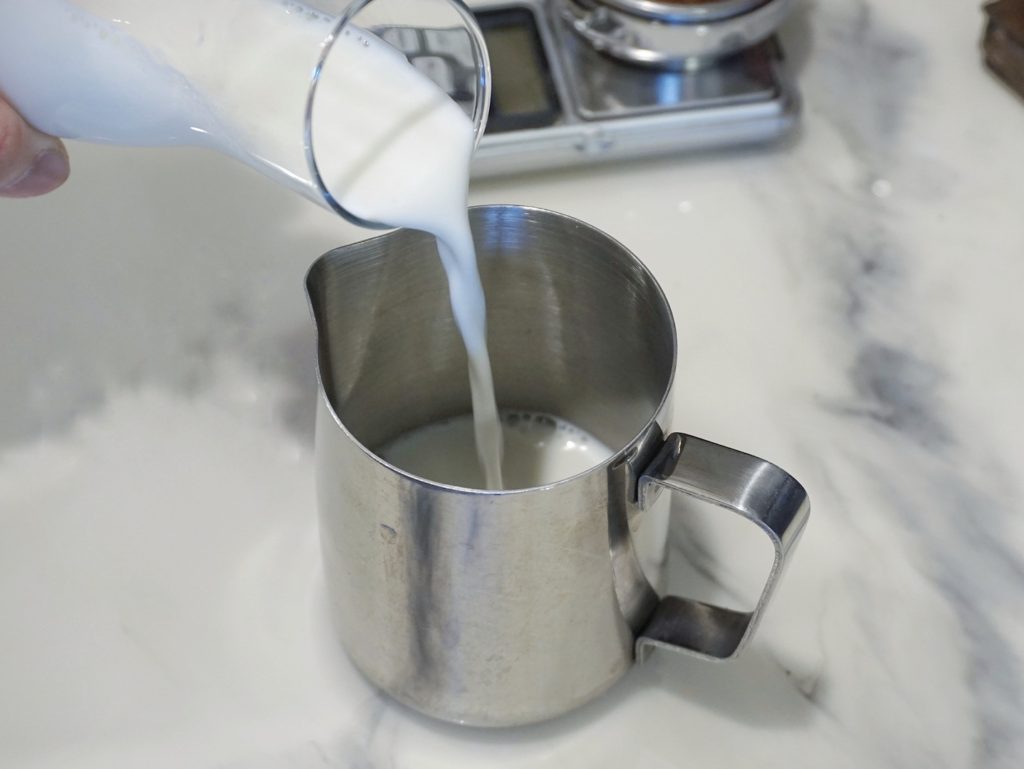
After prepping for espresso, pour 4 ounces of cold milk into your stainless steel frothing pitcher.
Part 2: Pulling an espresso shot
Gently tamp it down with a tamper.
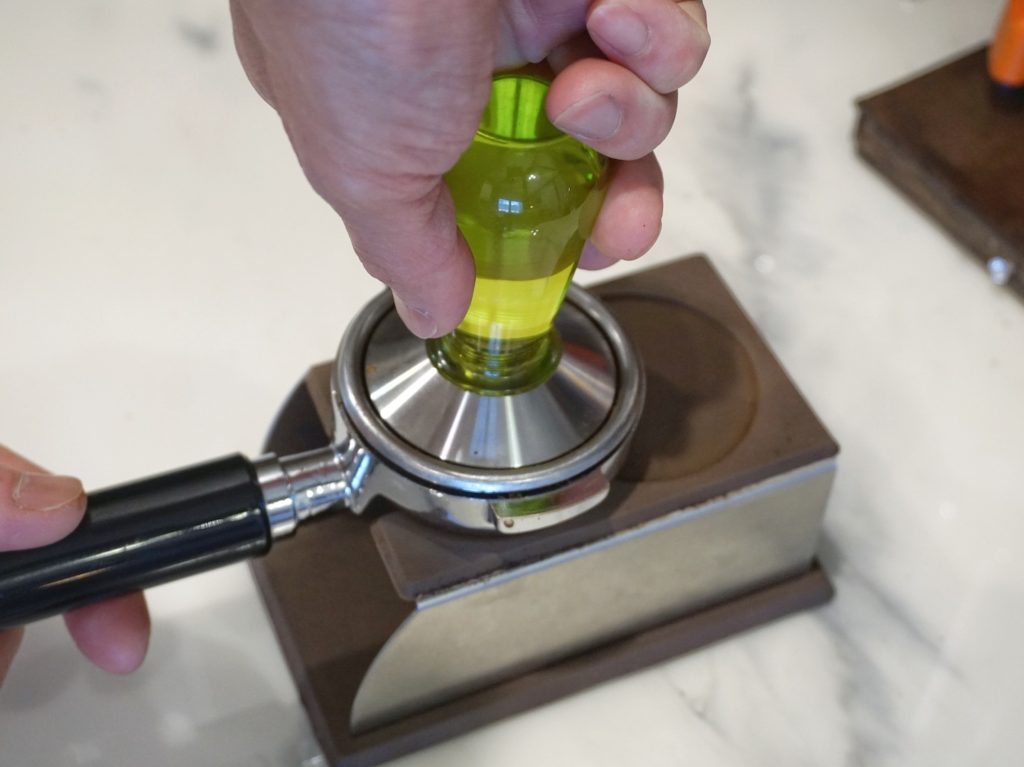
Secure the portafilter in the brew head and start the extraction process.
We refer to a brew ratio of 1:2, meaning that we will aim for 36 grams of brewed espresso in our cup since we start with 18 grams of ground coffee in our portafilter.
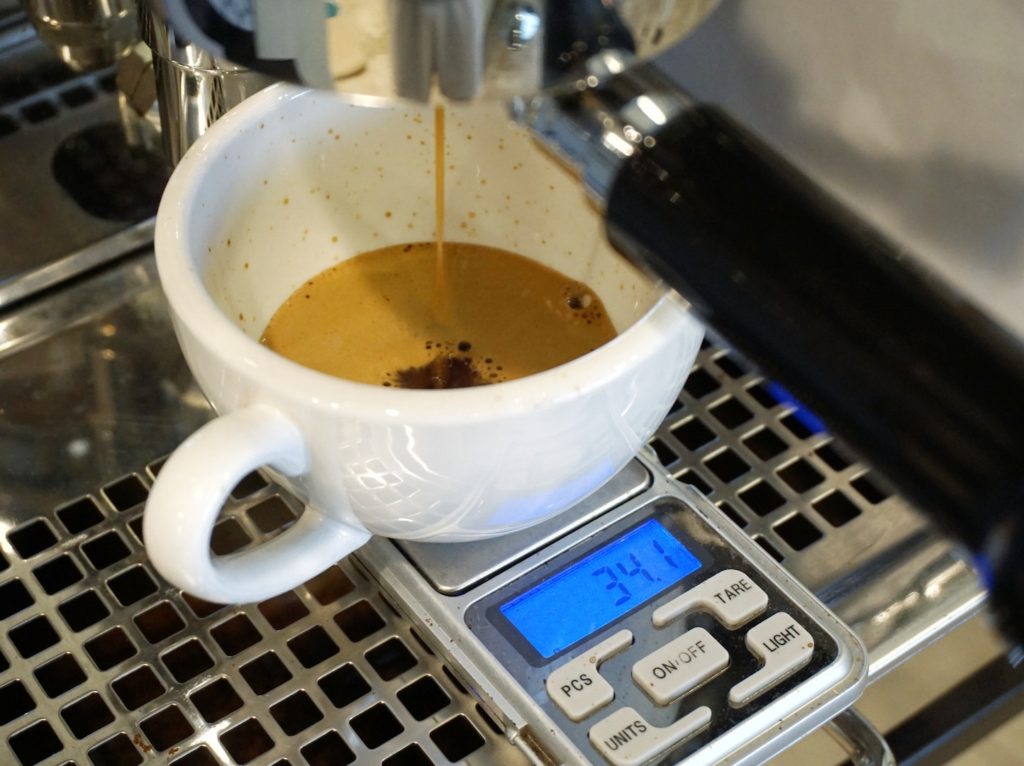
Part 3: Milk frothing
Most espresso machines have a steam wand built in that is used for frothing and steaming milk.
For cappuccino, the milk is frothed into microfoam that is almost double the volume of the original milk.
To do this, start with submerging the tip of the steam wand into the milk just below the surface and turn on the steam wand.
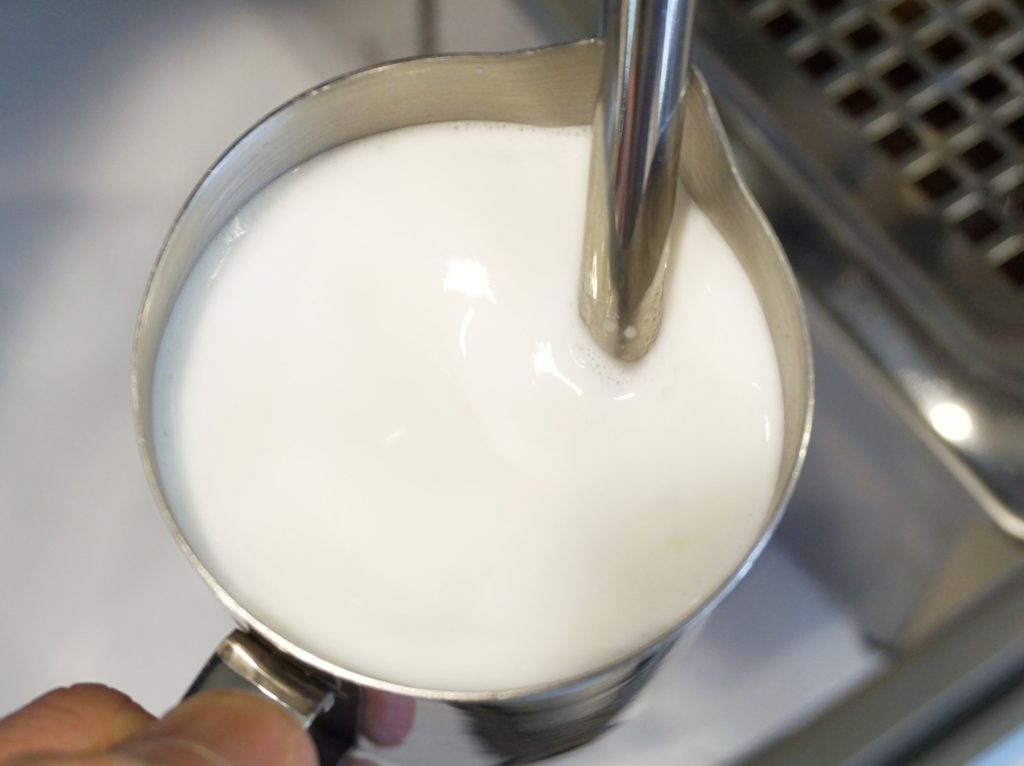
Keep the steam wand near the side of the pitcher to create a swirling vortex.
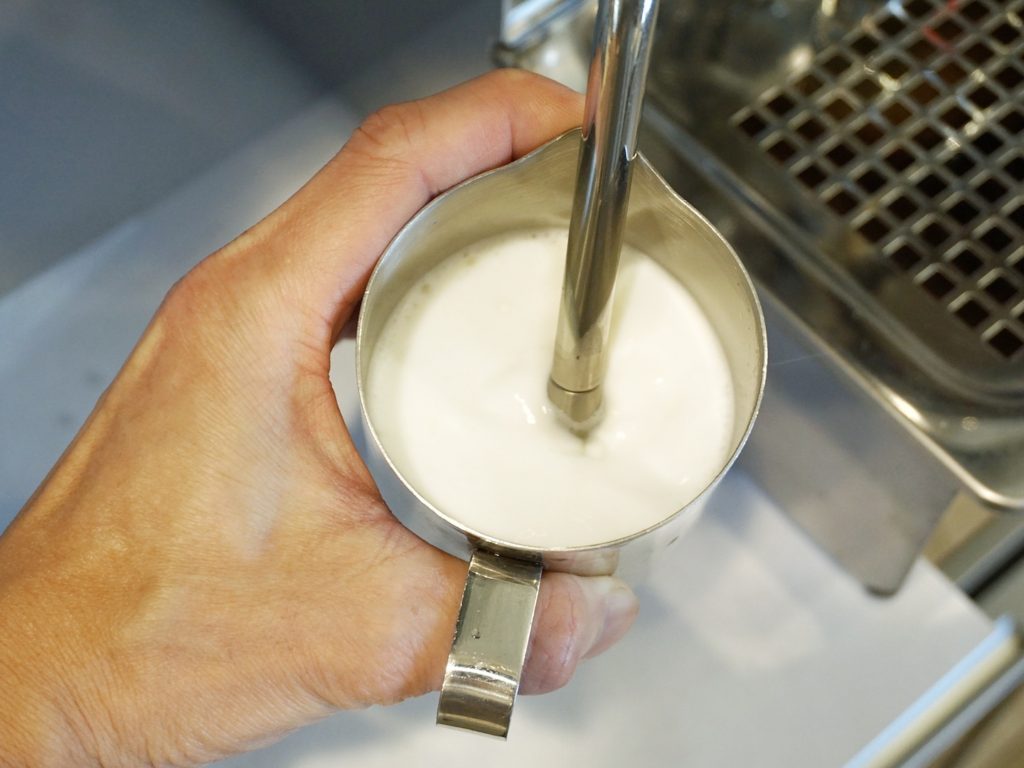
Once the milk has reached 155°F, or the pitcher is too hot to hold, turn the steam wand off.
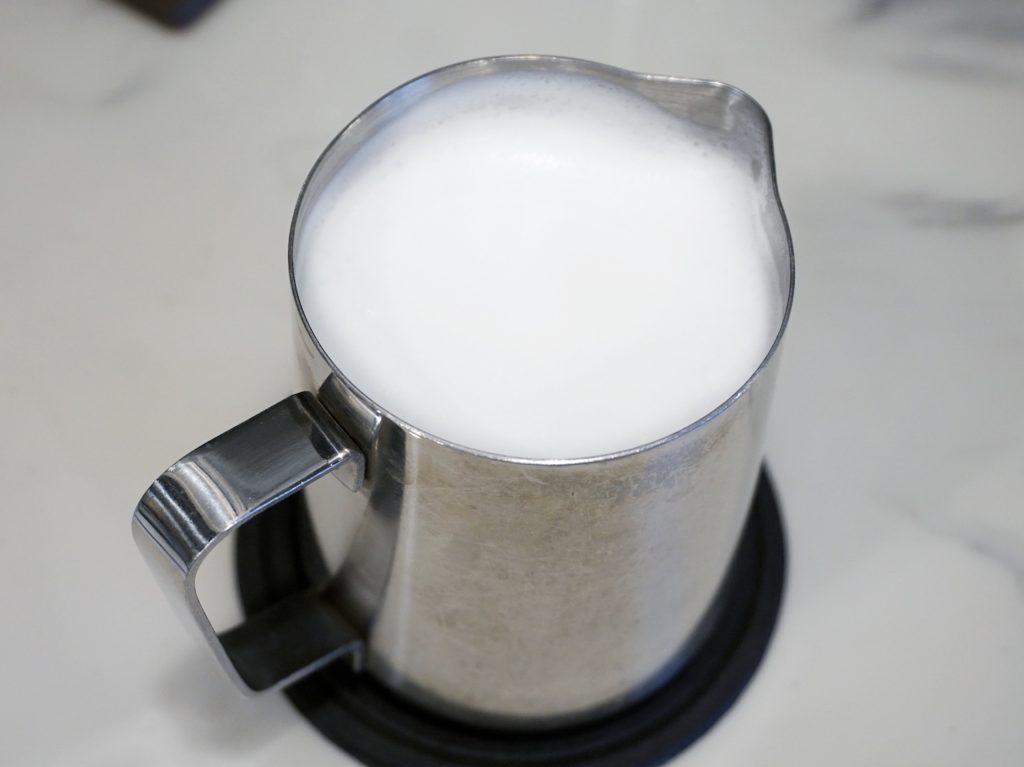
The texture of the frothed milk should be thick and velvety smooth, something akin to wet paint.
Part 4: Pouring
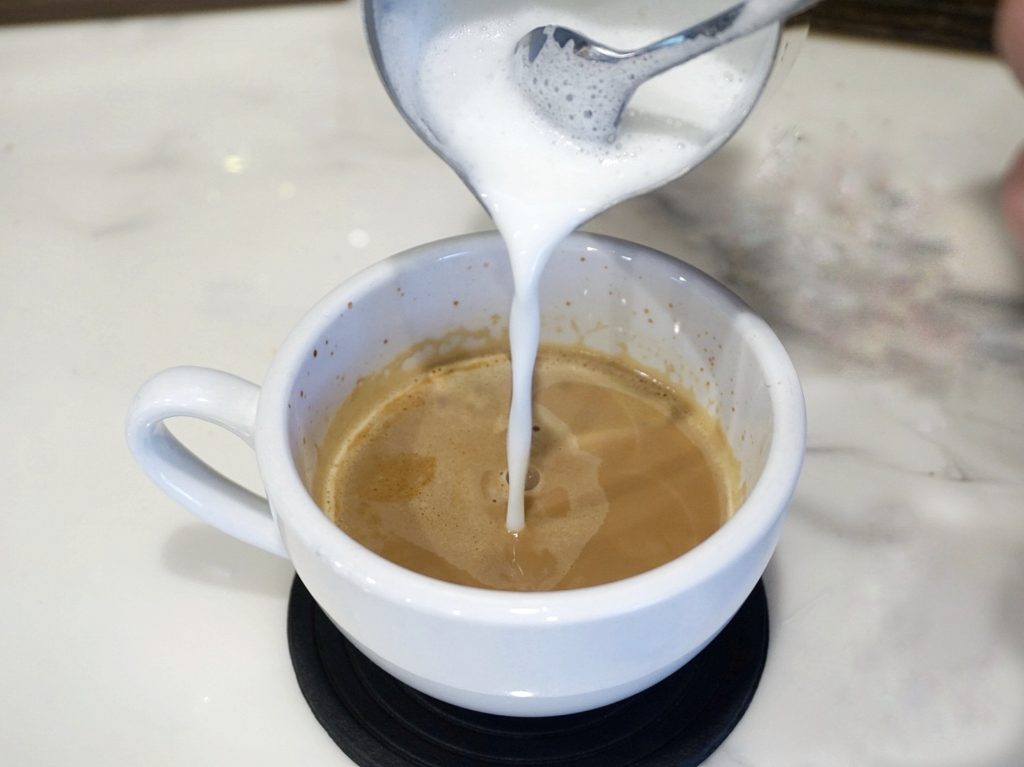
Use a spoon to hold the foam back and gently pour the milk over until the cup is almost full.
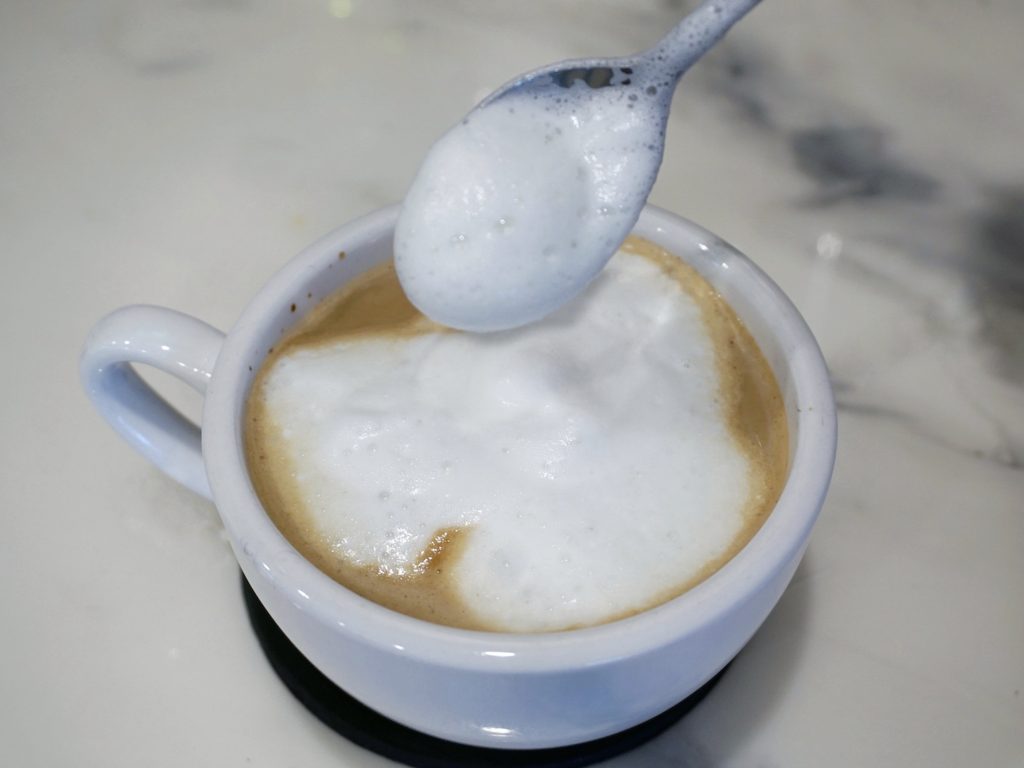
Add the foam on top evenly.
Part 5: Garnish
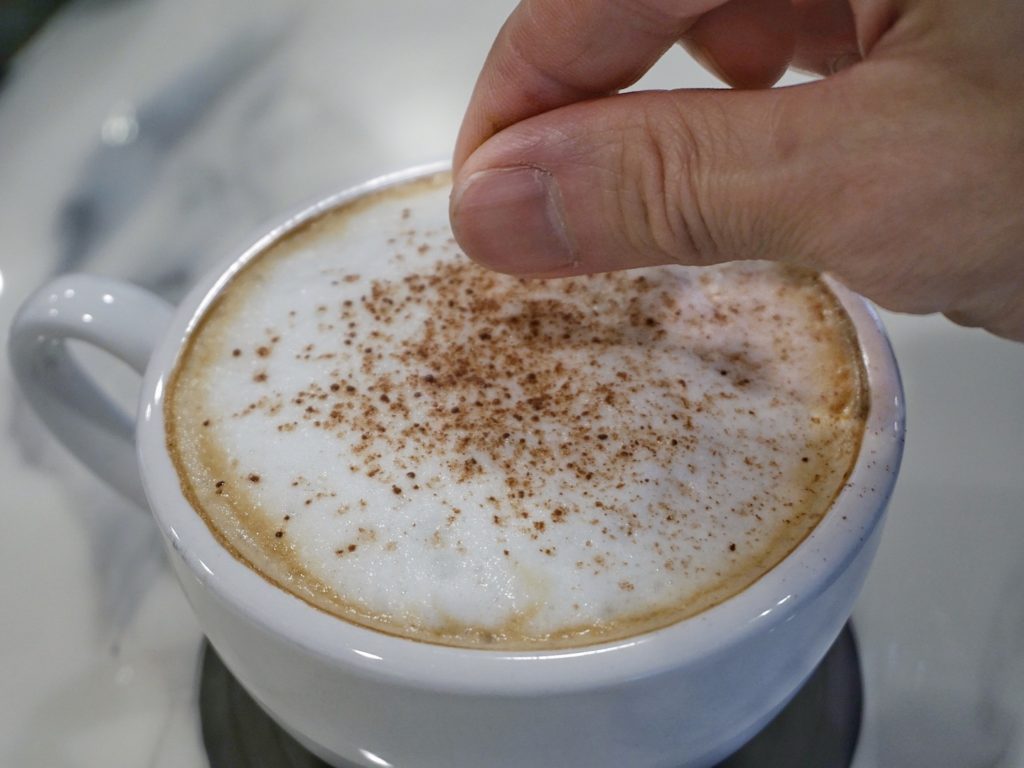
Sprinkle with ground cinnamon or cocoa powder on top.
So there you have it – an all-time classic cup of cappuccino!
Cappuccino With an Espresso Machine Recipe
Cappuccino

A cappuccino is an excellent choice for coffee lovers who like finely textured milk drinks with lots of froth.
Materials
- Espresso machine
- Stainless steel milk frothing pitcher
- Cappuccino cup with saucer
- Spoon
- Digital scale
- 18 grams ground coffee
- 4 ounces milk
- Ground cinnamon / Cocoa powder
Instructions
Part 1: Preparation
It is important to warm the espresso machine. Depending on your espresso machine, it may take 15-30 minutes to heat up.
Grind 18 grams of ground coffee into a portafilter and set it aside for later use.
It is recommended to grind coffee beans right before pulling an espresso shot for optimal taste. It is ok to use pre-ground coffee if you don’t have access to an espresso grinder, just make sure you use the correct espresso grind, extra-fine in our case, for this beverage.
After prepping for espresso, pour 4 ounces of cold milk into your stainless steel frothing pitcher.
Part 2: Pulling an espresso shot
Gently tamp it down with a tamper.
Secure the portafilter in the brew head and start the extraction process.
We refer to a brew ratio of 1:2, meaning that we will aim for 36 grams of brewed espresso in our cup since we start with 18 grams of ground coffee in our portafilter.
Part 3: Milk frothing
Most espresso machines have a steam wand built in that is used for frothing and steaming milk.
For cappuccino, the milk is frothed into microfoam that is almost double the volume of the original milk.
To do this, start with submerging the tip of the steam wand into the milk just below the surface and turn on the steam wand.
Keep the steam wand near the side of the pitcher to create a swirling vortex.
Once the milk has reached 155°F, or the pitcher is too hot to hold, turn the steam wand off.
The texture of the frothed milk should be thick and velvety smooth, something akin to wet paint.
Part 4: Pouring
Use a spoon to hold the foam back and gently pour the milk over until the cup is almost full.
Add the foam on top evenly.
Part 5: Garnish
Sprinkle with ground cinnamon or cocoa powder on top.
So there you have it – an all-time classic cup of cappuccino!
Recommended Products
As an Amazon Associate and member of other affiliate programs, we may receive a commission at no additional cost to you.
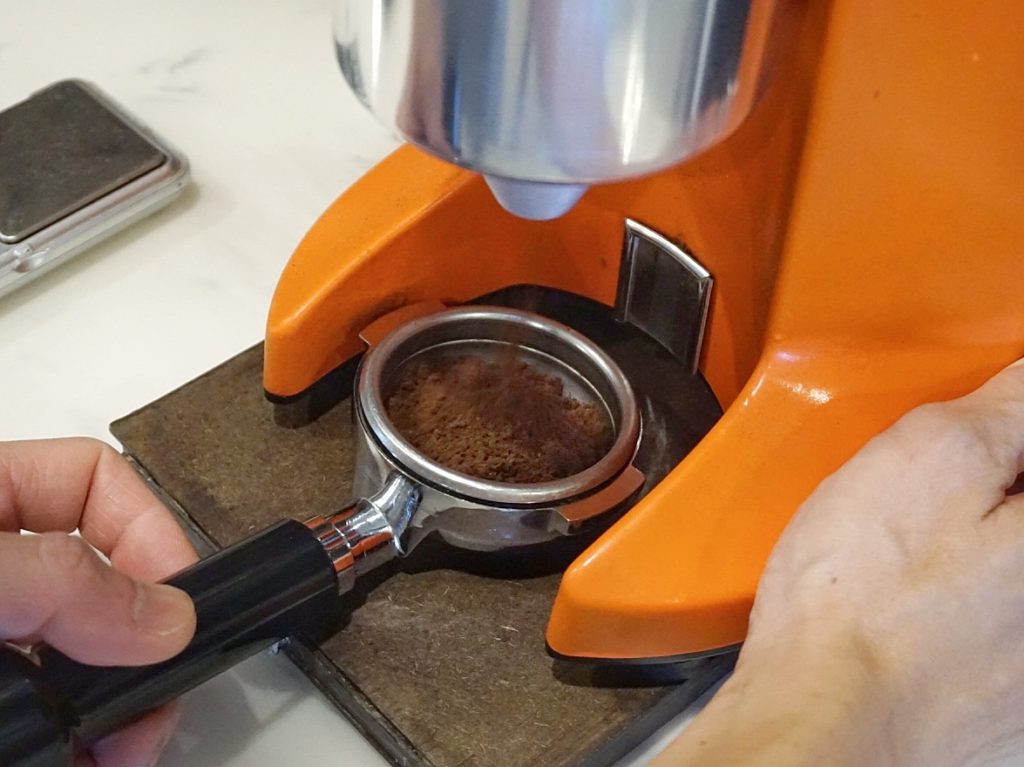
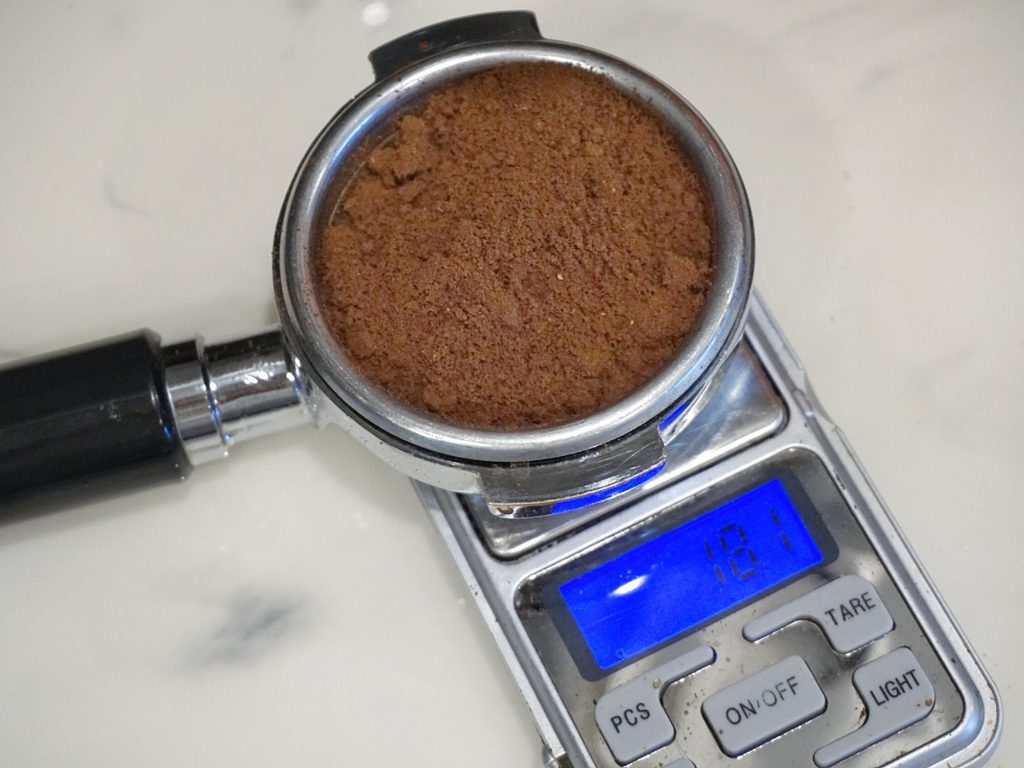
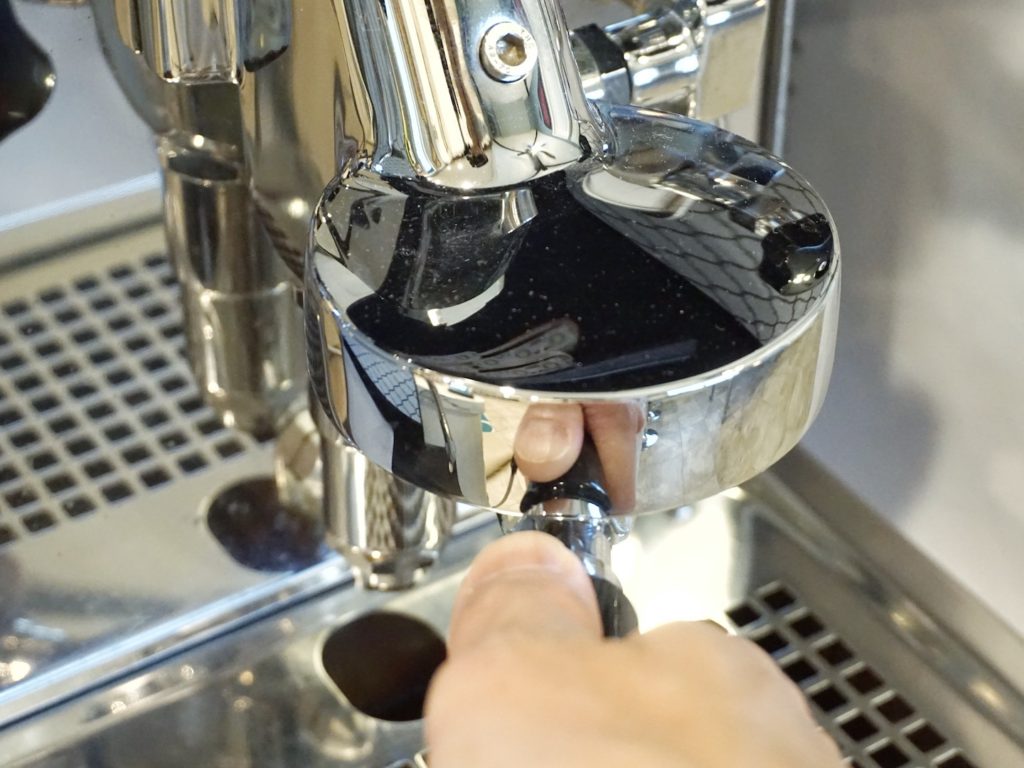
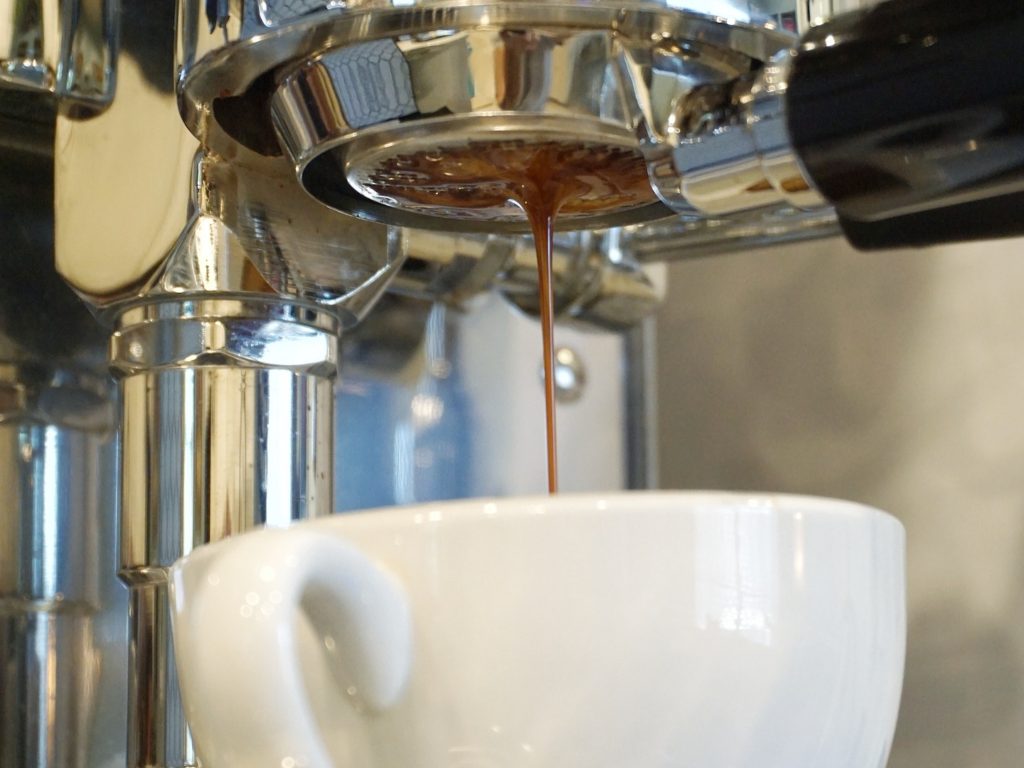
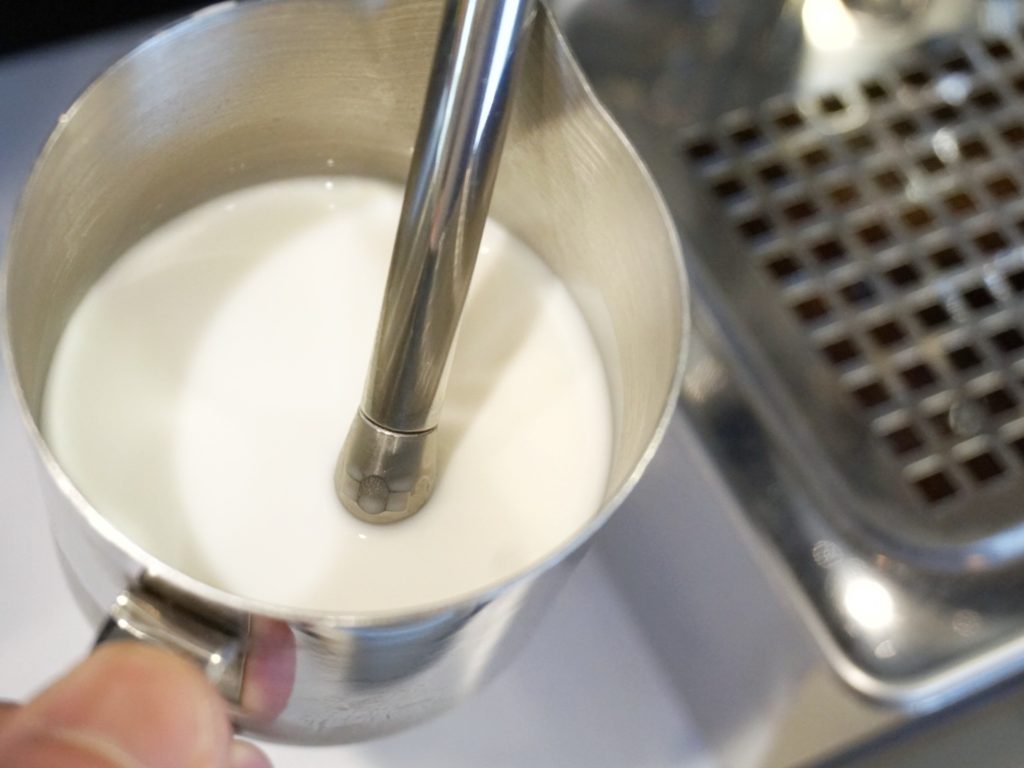
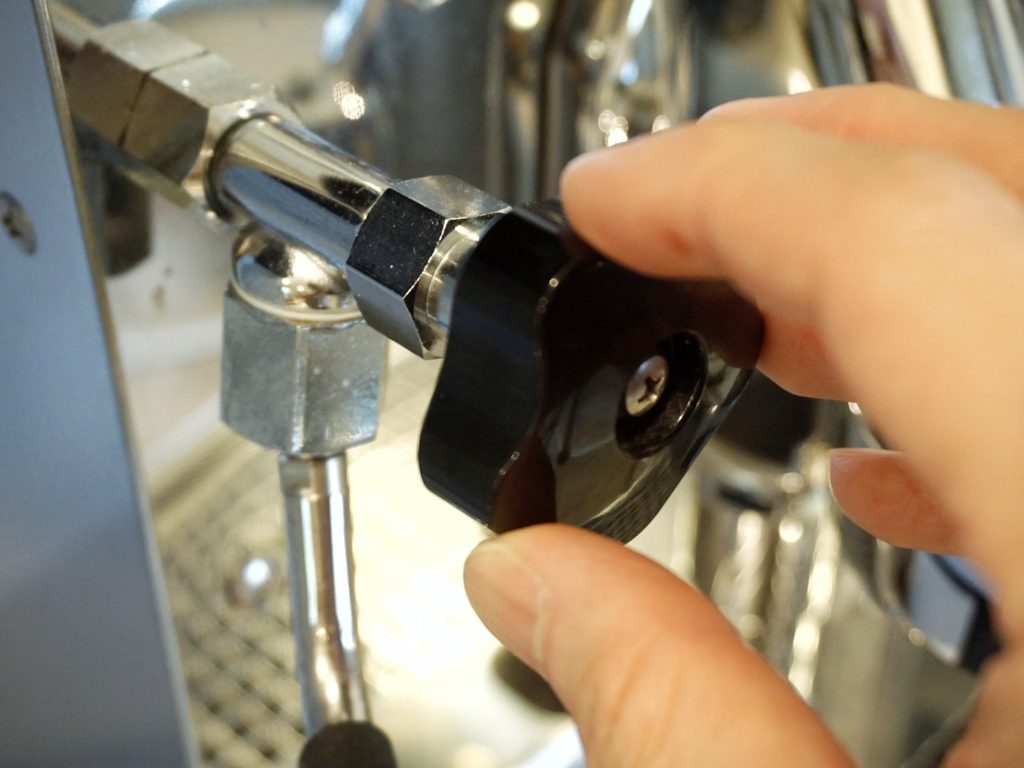

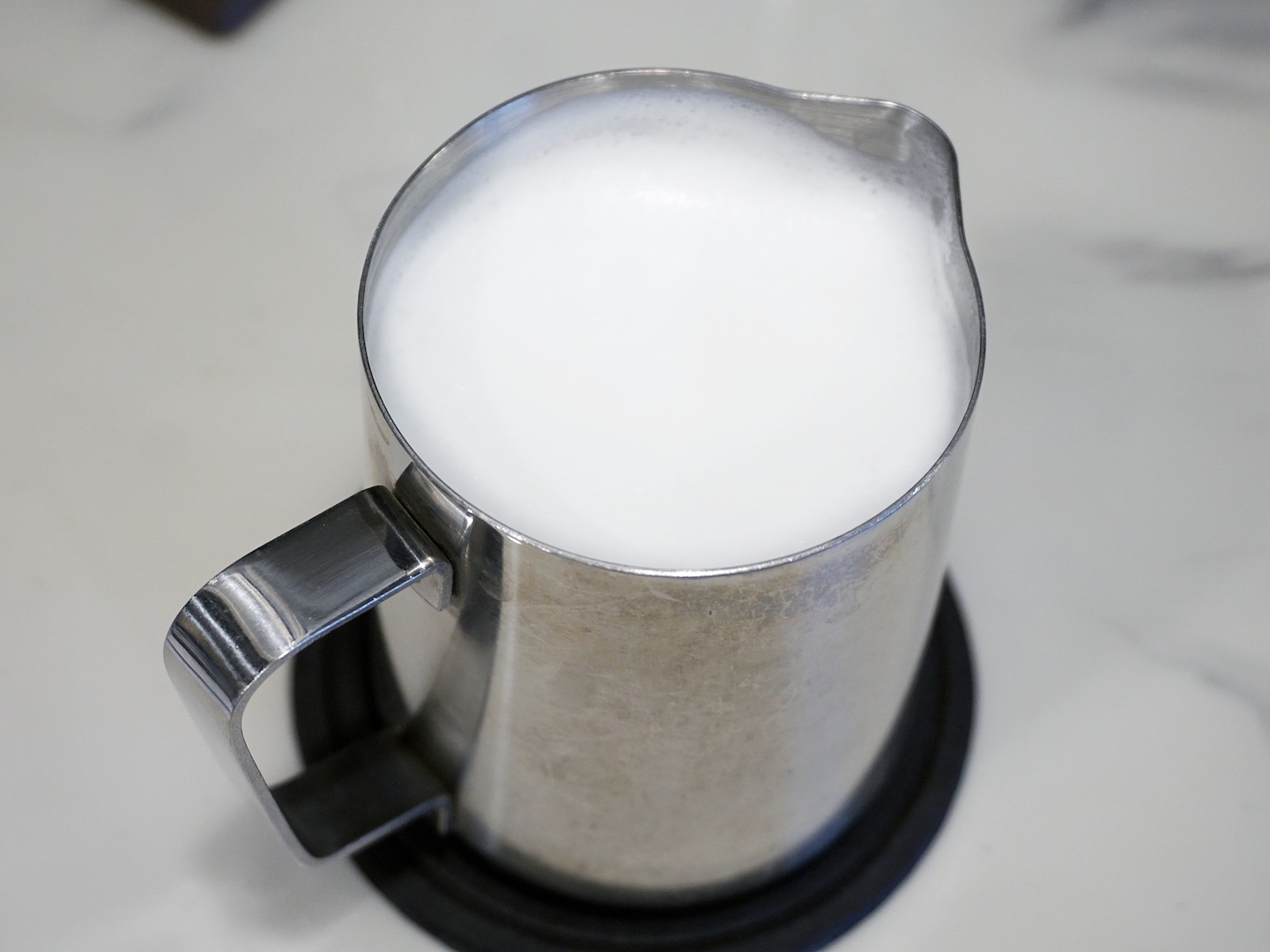
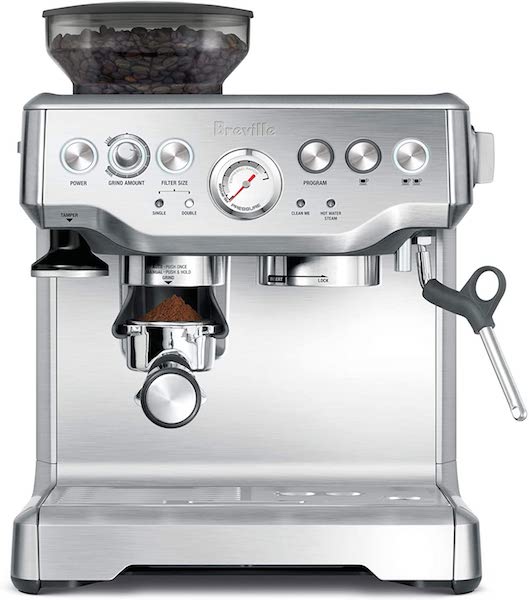
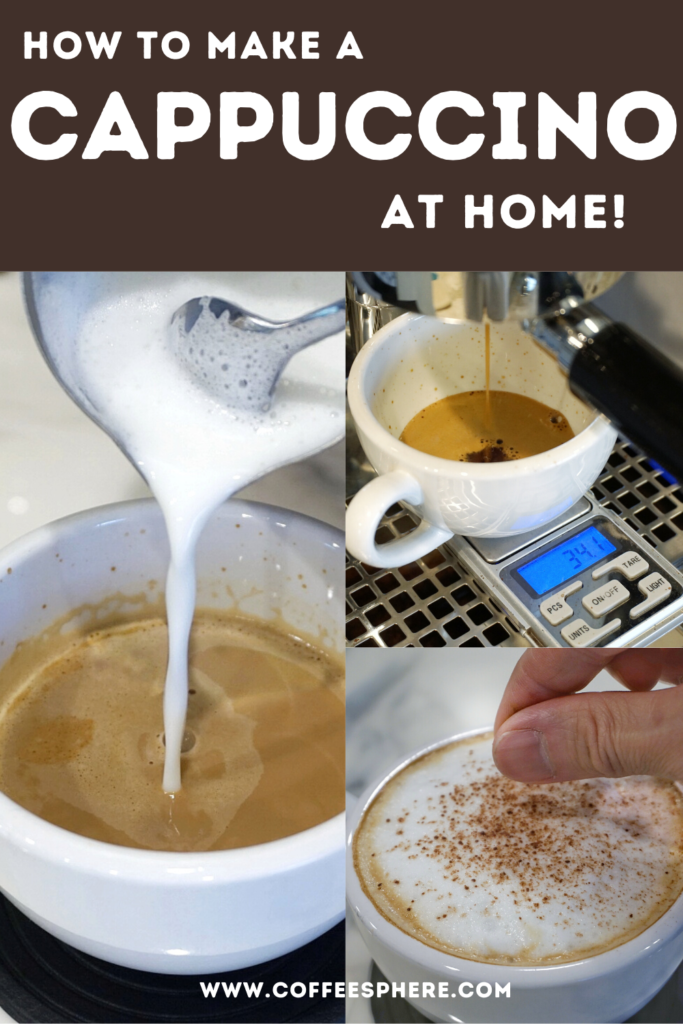
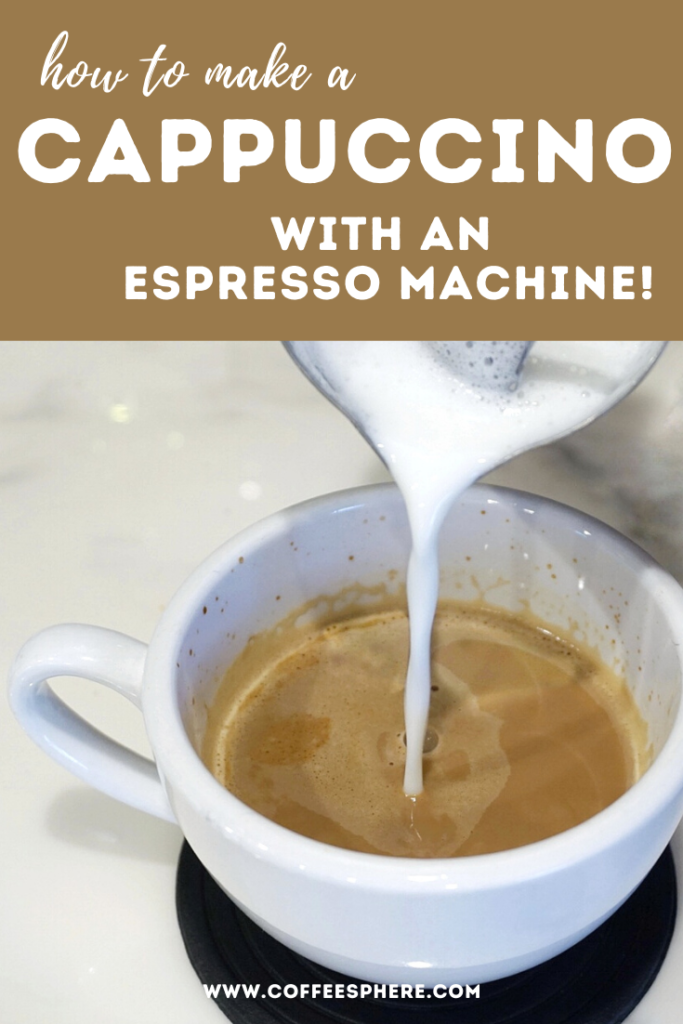


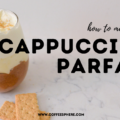

Leave a Reply